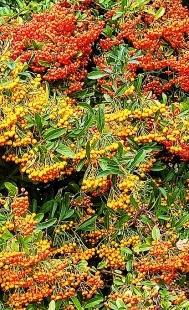Adam Yamey's Blog: YAMEY, page 4
August 30, 2025
Never come to Holland again with this passport
DURING THE 1980s, I used to drive from my home in Kent through Europe to Hungary and Yugoslavia. I used to take the car across the sea on the Olau Line that ran between Sheerness in Kent and Vlissingen in Holland. In those days, I held an old-style UK passport. With hard covers, it was dark blueish black. On the front cover, there was a coat of arms embossed in gold and words in gold lettering mentioning it was a British passport. There were two horizontal slots in the front cover. These were lined with white paper. On one of them, the passport holder’s name was written by hand, and on the other, the passport number.
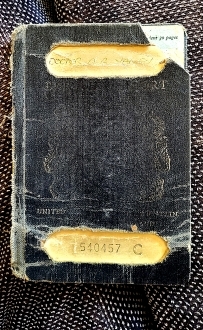
I used to carry my passport in my trouser pocket. So with time, it gradually got a bit bent as it pressed against my leg. Another thing that happened was that the gold coat of arms and the gold lettering wore so thin that they were barely visible. Likewise, my name on the cover also began to become less distinct.
At various demanding frontiers, such as the borders to Communist countries such as Albania, Bulgaria, and Hungary, the tatty appearance of my passport was of no concern to the often-over-zealous border officials. However, it did cause trouble in a place where I least expected it.
On one occasion, after disembarking at Vlissingen, I handed my passport to the Dutch immigration official. He looked at it, and then wandered away with it. About 10 minutes later, he returned with it, holding it gingerly by one of its corners. As he handed it to me, he said:
“Next time you are coming in Holland, you must have a new passport.”
Clearly my passport’s appearance was not in harmony with the Dutch sense of tidiness and orderliness.
August 29, 2025
The mouth as landscape in Dulwich, south London
RACHEL JONES IS an artist who was born in London in 1991. She trained at Glasgow School of Art, then at the Royal Academy Schools. There is an exhibition of her paintings, “Gated Canyons”, at Dulwich Picture Gallery until 19 October 2025. I must admit I had never heard of her before visiting the show in August 2025. So, I went to see it without knowing what to expect.
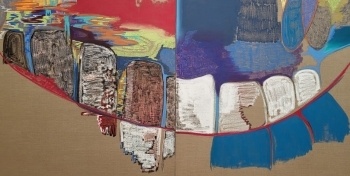
Rachel’s colourful paintings on display vary in size and shape. All of them are more abstract than figurative, but not completely abstract. The artist uses colours well, producing appealing images. Many of them interested me as a retired dentist because most of what was on display included somewhat abstract depictions of jawbones, teeth, lips, and tongues. The artist regards the mouth as being important as it is a portal through which we interact with the outside world, express our feelings, and explore psychological landscapes. If I understand it correctly, Rachel regards the mouth as a gateway to both our inner selves and the outside world. Having read the informative labels that tell viewers about her work, I began seeing, or even imagining, elements of her paintings that might be interpreted as features of oral anatomy.
The exhibition occupies three rooms, one of which I felt was too small to properly view the three large pictures within it. Otherwise, the paintings were nicely displayed and well-lit. I am glad I saw the show, but I would be reluctant to recommend it to most people I know.
August 28, 2025
Two barristers from South Africa stand together in central London
A FEW MONTHS AFTER Mahatma Gandhi was born in India in October 1869, Jan Smuts was born in South Africa’s Transvaal Republic (in May 1870).
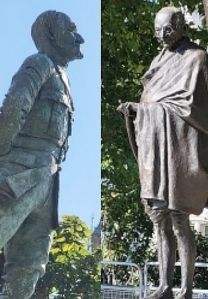
In 1893, the young barrister Mohandas K Gandhi, the future ‘Mahatma’, arrived in Durban, South Africa, from Bombay. This was the year before Smuts graduated in law at Christ’s College in Cambridge, England. After passing the Bar examinations in late 1894, he returned to South Africa, where he became involved in politics.
Gandhi remained in South Africa from 1893 until 1915. During his time there, he practised law as a qualified barrister, fought for the rights of Indians in the country, and gradually developed his non-violent approach to protest, which he later practised during the struggle to free India from British domination. During the Second Anglo-Boer war (1899-1902), Gandhi assisted the British with caring for casualties. Meanwhile, Smuts fought with his fellow Boers.
After that war, Smuts was involved with negotiations that led eventually to the union of the four territories, which then became unified as the South Africa we know today. In 1914, the First world War broke out. Smuts fought for the British, most notably in what was then German Southwest Africa, now Namibia. Meanwhile, in 1915 Gandhi returned to India, and the rest is history.
Both Gandhi and Smuts are commemorated by statues in London’s Parliament Square. They stand near each other, but not next to each other. Jan Smuts stands on the north side of the square, and is depicted as striding towards Westminster Abbey. Mahatma Gandhi stands on the east side of the square quite close to the statue of another South African, Nelson Mandela. Gandhi appears to be gazing at the Houses of Parliament.
Seeing those statues standing in the same square today made me wonder how, if at all, Gandhi and Smuts felt about each other. I found an article in a website called “The Observation Post”, which helps understand their relationship. Here are some quotes from it:
“It’s a common misconception that Jan Smuts and Mahatma Gandhi’s relationship was one of animosity. It is a little known fact that both men actually respected each other, remaining life long admirers of one another … Gandhi tried, at all times, to look for the positive in Smuts and said of him that he had a ‘high place among the politicians of the British Empire and even of the world’.”
When Gandhi was about to leave South Africa in 1915, he sent Smuts a pair of sandals that he had made at Tolstoy Farm, a cooperative colony he set up near Johannesburg, from which he ran his campaign of satyagraha (non-violence). Smuts wore these every day when at his farm, and is recorded as having said on Gandhi’s seventieth birthday:
“I have worn these sandals for many a summer, even though I may feel that I am not worthy to stand in the shoes of so great a man.”
August 27, 2025
Some tiny doors at the Windsor Castle in London’s Kensington
THREE YEARS AGO, I published a book about west London past and present. In it, I made a brief mention of a pub, the Windsor Castle, which is near to Notting Hill Gate. This is what I wrote in the book:
“At the western end of Peel Street, there is another pub, The Windsor Castle. Unlike the Peel Arms, this is a working establishment, now popular with the locals, most of whom are definitely not poorly paid labourers. The hostelry was originally built in about 1826, and then remodelled in 1933. The pub contains much of its original late Georgian building fabric and is a Grade II listed place.”
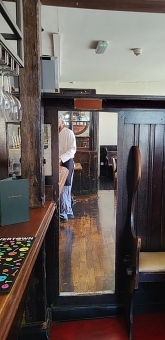 A tiny door
A tiny doorAlthough the pub is a mere 5 minutes’ walk away from our home, where I have been living for more than three decades, I only entered it for the first time today, the 24th of August 2025. On entering, we were given a warm welcome by the pub’s manager before we sat at a table in the shade of a tall tree that overlooks the hostelry’s enclosed garden.
Within the pub, the furnishings look quite old. A notice on the wall draws the attention of visitors to some very low doorways in the wooden screens that divide the interior into separate rooms. The notice relates that in the seventeenth, eighteenth, and nineteenth centuries, families ran pubs. The children of the landlord and landlady used to work in the pubs, delivering food and drinks. They would enter and exit the areas where the customers were enjoying food and drinks through the tiny doors such as still can be seen at the Windsor Castle, closing the doors behind them. The pub’s patrons were not allowed to use these little doors. They had to stay in the sections of the pub that were reserved for their social status: the public bar, the private bar, the sherry bar, and so on.
Just as I had never entered the Windsor Castle before, I had never seen these tiny doorways in any of many pubs I have visited.
My book “BEYOND MARYLEBONE AND MAYFAIR: EXPLORING WEST LONDON” is available from Amazon: https://www.amazon.co.uk/BEYOND-MARYLEBONE-MAYFAIR-EXPLORING-LONDON/dp/B0B7CR679W/
August 26, 2025
Fascinating artworks at a gallery in Cambridge
ARTSPACE 5-7 IS A small gallery housed in a pre-WW2 Modernist building in Portugal Place, a side street that leads away from Bridge Street in the university town of Cambridge. We visited the gallery in August 2025, and viewed a collection of sculptures and drawings by the London born artist Richard Bray (born 1955). A few years after being awarded a degree in Photographic Arts at the Central London Polytechnic, he was awarded a degree in Fine Art at Norwich School of Art and Design. His exhibition at Cambridge is called “Visible Invisible”.
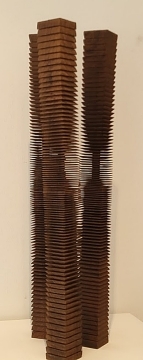
Whereas kinetic art depends on its movement for effect, Bray’s finely crafted sculptures and prints are static. However, as the viewer moves around his artworks, viewing them from different perspectives, what can be seen changes. Bray’s works seem to acquire internal movement that can only be perceived when the viewer moves past or around them. These effects, which add great beauty to his works, cannot be captured using still photography. Three of the sculptures were on display in the churchyard of St Clements opposite the gallery
Bray spent time in Tanzania during the 1980s. What he must have seen in the way of local design and crafts has clearly influenced the appearance of the works we saw in Cambridge. In fact, when I first entered the exhibition, I saw what I mistakenly thought was a collection of sculptures from Africa.
The gallery because of its Modernist design is worth seeking out when you visit Cambridge. The exhibition of Bray’s works, about which we knew nothing in advance, were refreshingly exciting to see.
August 25, 2025
Defending shop windows from unruly revellers at the Carnival
IT IS THAT time of year again. In two days’time, the Notting Hill Carnival will commence. Swarms of revellers will converge at Notting Hill Gate to watch or participate in London’s famous late August carnival. Most of them will be good-natured and well-behaved, but inevitably there will be those who will try to create mayhem and chaos.

To defend against damage, intrusion, and vandalism, many householders and shop keepers barricade themselves to prevent expected problems, everything from broken windows to being adopted as casual toilet spaces. The main form of protection is the erection of wooden boards and the employment of security personnel.
One of the first businesses to put up boarding this year was our local Tesco supermarket. This made me think. And what I thought was that one of the important causes of unruliness is excessive consumption of alcohol. And where will there be a ready supply of this intoxicant? It will be at Tesco’s supermarket, which is now hidden behind ugly timber boards. The sales of alcohol will raise great profits, but what effects will it have on the properties of those who are unable to afford paying for boards and barricades?
August 24, 2025
Berry pretty
August 23, 2025
One church two parishes and two denominations
ST CLEMENT’S CHURCH in central Cambridge began being constructed in the 13th century. It was modified in later centuries. While many Anglican churches contain one or two Orthodox-style icons, St Clement’s has many of these, including a large one depicting the Mother and Child, flanked by typical Orthodox style, sand-filled candle holders. In addition, there are several large reproductions of frescos of portraits of Orthodox saints including St Clement. Apart from the Orthodox Church features within the building, there are furnishings that one would expect to find in any Anglican church.
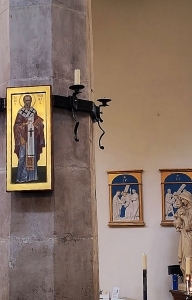
The reason that the Orthodox ‘fittings’ fill the church is that St Clemnt’s doubles up as a church for an Anglican congregation and also for a local Russian Orthodox congregation, the members of the Parish of St Ephraim the Syrian, which is an English-speaking Russian Orthodox parish of the Diocese of Sourozh. In the Orthodox church, a screen called the ‘iconostasis’ and usually covered with religious paintings separated the clergy from the congregation. St Clement’s contains an iconostasis, which is retractable. During Orthodox masses, the hinged screen can be unfolded to hide the chancel from the rest of the church. When the Orthodox congregation are not using the church, it is folded away, and can hardly be seen from the nave. I had never seen a retractable iconostasis until I first entered St Clement’s (in August 2025).
One other noteworthy feature in the church is a mural on the east wall above the (Anglican) high altar. It was painted in 1872 by Frederick Richard Leach (1837–1904), who was born in Cambridge and later worked with the designer and social activist William Morris (1834-1896).
I have visited Cambridge numerous times and often passed St Clement’s, but it was only in August 2025 that I first stepped inside. I am glad I did because although it is a fine mediaeval church, its use by two Christian denominations and, in particular, its folding iconostasis makes it especially interesting.
August 22, 2025
A museum that once existed in London, but is no more
DURING A VISIT to the Victoria and Albert Museum’s recently opened Store at London’s Olympic Park, I spotted an interesting vitrine containing artefacts from India. The small collection was accompanied by an informative label, which tells the viewer that these objects were once housed in a museum that no longer exists – London’s India Museum. This establishment existed from 1801 until 1879.
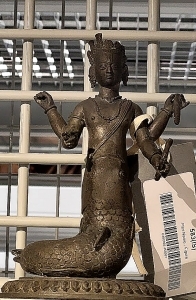
The India Museum was founded by the British East India Company (‘EIC’). Designed to acquaint visitors with India’s resources and industries, it was housed in the company’s headquarters in Leadenhall Street. After the so-called Indian Mutiny (1857-1858: First War of Independence), the EIC lost its role as the British administrator of India. It was replaced by the government-controlled India Office.
In 1851, the India Museum was a major contributor to the Indian section of Great Exhibition at the Crystal Palace in Hyde Park. Later, the museum continued to participate in international exhibitions that followed. In 1861, the museum moved to Fife House in Whitehall, then to the attics of the newly built India Office in 1869, and from 1875 then to the ‘Eastern Galleries’ on the exhibition site to the west of the present Exhibition Road in South Kensington.
The India Museum was closed in 1879. Then as related in the Victoria and Albert’s website:
“… the collections were dispersed. In broad terms, the natural history specimens were divided between the Royal Botanic Gardens and the nascent British Museum (Natural History) – today the Natural History Museum – according to their nature. Antiquities and some parts of the ethnographic collections went to the British Museum. The bulk of the manufactured objects, however, were transferred to the South Kensington Museum, forerunner of today’s V&A.”
It is a few of those 19,000 objects transferred to the Victoria and Albert Museum that we saw in the vitrine at the V&A’s amazing open access warehouse at the V&A Store at Olympic Park. While we were at the Store, we saw many other objects that must have been brought from India. No doubt, some of those had once been on display in the museum that exists no more.
August 21, 2025
A friendly encounter in a cathedral in Pondicherry (India)
Between late 2024 and early 2025, we spent 88 days travelling 4000 miles through India. I have published an account of this fascinating odyssey in my book, “88 DAYS IN INDIA: A JOURNEY OF MEMORY AND DISCOVERY”, which is available from Amazon (https://www.amazon.co.uk/dp/B0FKTFBFM2). Here is a very brief excerpt from the book. It describes what happened when we were sitting in a cathedral in the formerly French colony of Pondicherry.
HERE IS THE EXCERPT:

“
We sat inside the spacious cathedral’s cool interior within reach of the draught
coming from a fan attached to one of the pillars supporting the long nave’s high,
barrel-vaulted ceiling. As we were relaxing in the cooling breeze, a small group
of Indians entered, and went to the front pews, where they knelt and prayed in
front of the high altar. Amongst them was a young couple dressed in their finest.
Each of them had lavish flower garlands (malas) around their necks. As they
walked away from the front of the church towards where we were seated, we
asked them if they had just married. They told us that that was the case. They
had been married in another church and wanted to pray in the cathedral. These
friendly people invited us to join them in the church’s sunlit entrance while
photographs were being taken of them, of us, and of us with them. They asked
us for our blessing.
Opposite the cathedral on a corner plot, we entered a large bookstore. Tables
covered the floor. They were laden with books, mostly new, but not arranged in
any obvious order. Along one side of this vast hall, there were ...
“
END OF EXCERPT
Read my book, and enjoy discovering the wonders of India without leaving home!

